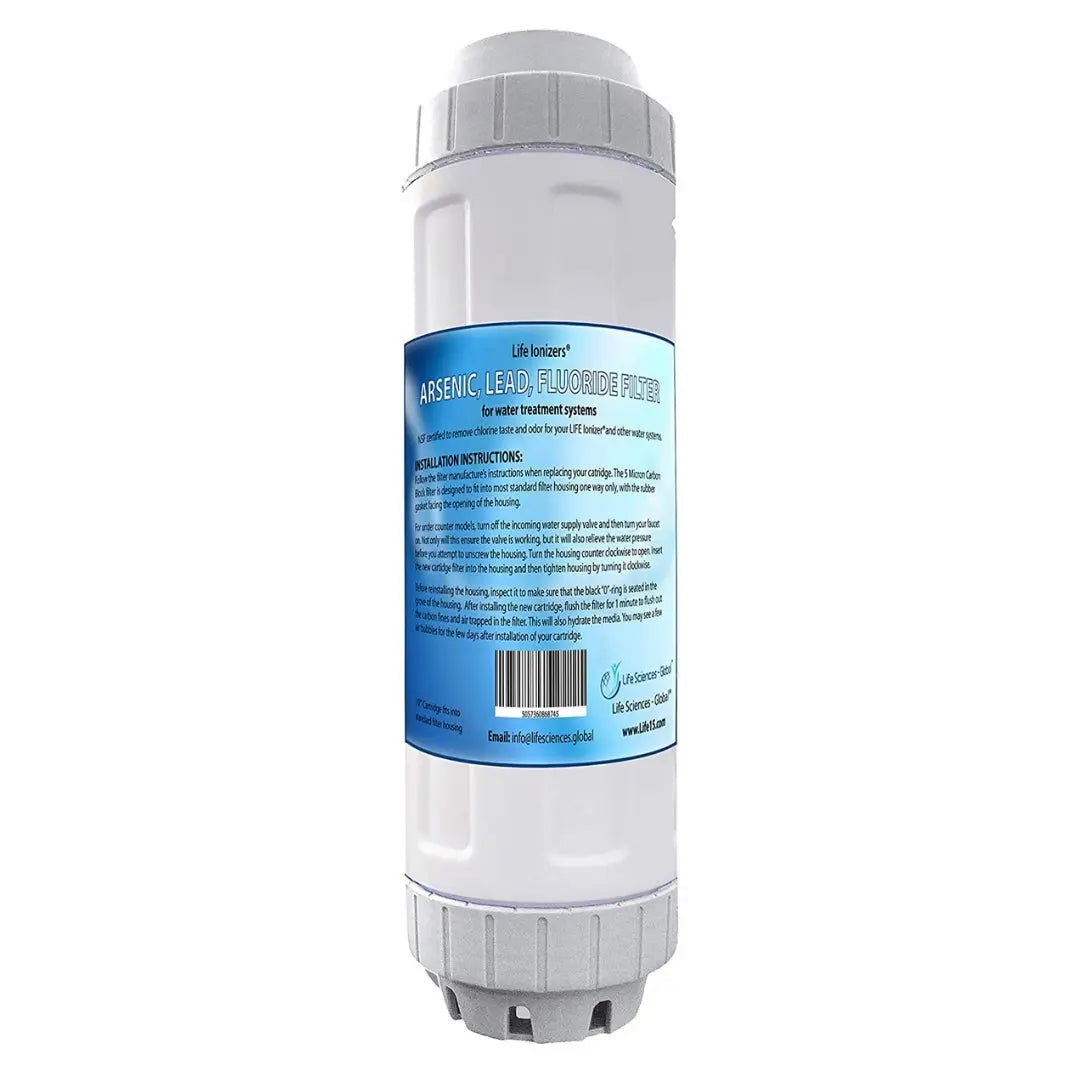Fluoride, Arsenic & Lead Reduction
Couldn't load pickup availability
- HEALTHIER WATER - Our filter removes harmful chemicals like fluoride, and arsenic, and leads to safe levels in your drinking water.
- LONG LASTING - Lasts up to 12 months before replacing
- EASY TO USE - With a quick installation process shown in the images above you'll be drinking healthier water in no time.
- DISCRETE - Fits inside of the filter housing either on top or underneath your counter.
- OFFICIAL MANUFACTURER - Only Life Water Filters pre-filters like this will work with your machine.
We recommend you change HOUSINGS every 3 to 5 years as they become brittle from all the chemicals being filtered out of your drinking water
Do Life Filters Fluoride, Arsenic & Lead Reduction Filters use Bone Char?
Yes, Life Water Filters combine this great filter media, bone char, along with Alumina as the best filtration media to reduce fluoride, arsenic, and lead in drinking water. Bone char is a type of activated carbon that is made from animal bones and has a high capacity for removing impurities from water.
What is the use of alumina in water treatment?
Activated alumina (AA) is considered a Small System Compliance Technology (SSCT) for uranium by the US Environmental Protection Agency, and it can remove up to 99 percent of the contaminant, depending on the pH and concentrations of competing ions. In addition to removing arsenate, fluoride, sulfate, and selenate, Activated alumina (AA) is also effective at neutralizing other ions.
How does activated alumina remove arsenic from water?
In adsorption and ion exchange, there is a strong affinity for dissolved arsenic for various solid materials, including iron hydroxide and aluminum hydroxide flocs. These solids have sorption sites on their surfaces that effectively remove arsenic from the solution.
What does filtering through alumina do?
Fluoride and arsenic are only removed from water by activated alumina (AA). As an aluminum oxide ceramic compound with a high surface-area-to-weight ratio, AA is extremely effective at adsorbing fluoride.
Are activated alumina water filters safe?
In addition to being non-toxic and non-corrosive, activated alumina (AA) is safe for the environment and humans. Excessive exposure to aluminum oxide, however, may cause mild irritation to the eyes and skin. In all water filtration systems, activated alumina is tightly packed, so exposure to it is unlikely
Is activated alumina toxic?
Desiccant materials like activated alumina are safe for people and the environment. Aluminum oxide, or Al2O3, is the main constituent of activated alumina. Aluminum oxide is non-toxic, but too much exposure can cause mild irritation to the skin and eyes.
Is alumina a suitable absorbent?
Its high porosity and surface activity make activated alumina an excellent adsorbent (Yang, 2003a). Controlled heat treatment and acid or alkali treatment can tailor the pore structure and surface chemistry of activated alumina to suit various applications.
Does activated alumina remove arsenic?
The most commonly used adsorbent for removing arsenic from aqueous solutions is activated alumina (AA). In contrast, conventional porous solids such are poorly defined in their pore structure, have low adsorption capacities, and act slowly.
What type of water pollution can activated alumina remove?
For the removal of arsenic from ground and surface water, activated alumina (AA) is the most effective sorption material. To remove arsenic using adsorption, which is currently the preferred method, it is advisable to use a non-leachable material.
Is alumina safe to use?
Aluminum metallic or elemental is not included in this safety assessment. In this safety assessment, the CIR Expert Panel concluded that alumina and aluminum hydroxide are safe in their current use and concentration.
Will activated alumina remove lead?
Activated alumina is a "point of use" technology that successfully removes lead from water. Heavy metals can be removed using metal oxides, such as activated alumina.
Is alumina a natural ingredient?
Aluminum oxide is commonly known as alumina. Natural minerals are used in cosmetics as abrasives, thickeners, and absorbents.
What is the difference between aluminum and alumina?
The chemical element aluminum has an atomic number of 13 and the atomic symbol Al. The chemical formula for alumina is Al2O3. Aluminum is a chemical element, while alumina is a compound that contains aluminum. This is the key difference between aluminum and aluminum.




